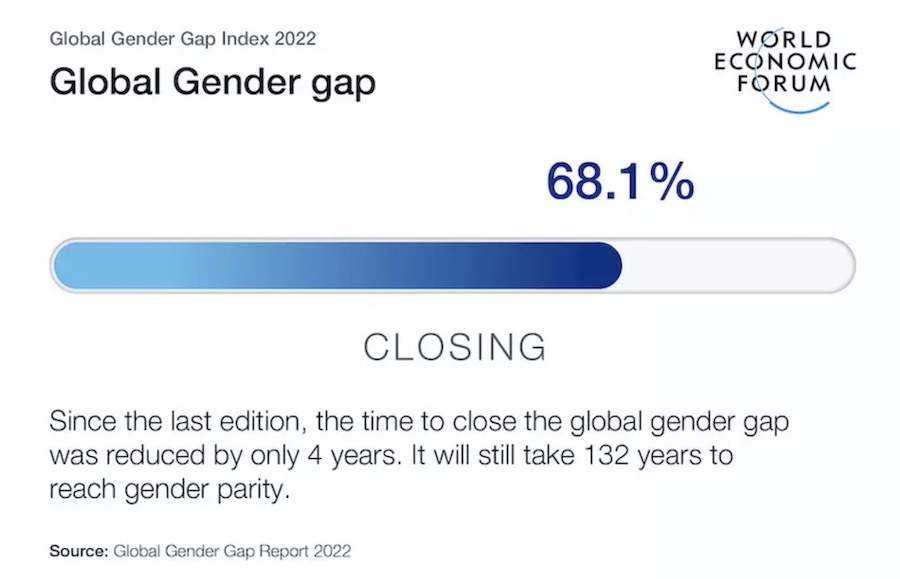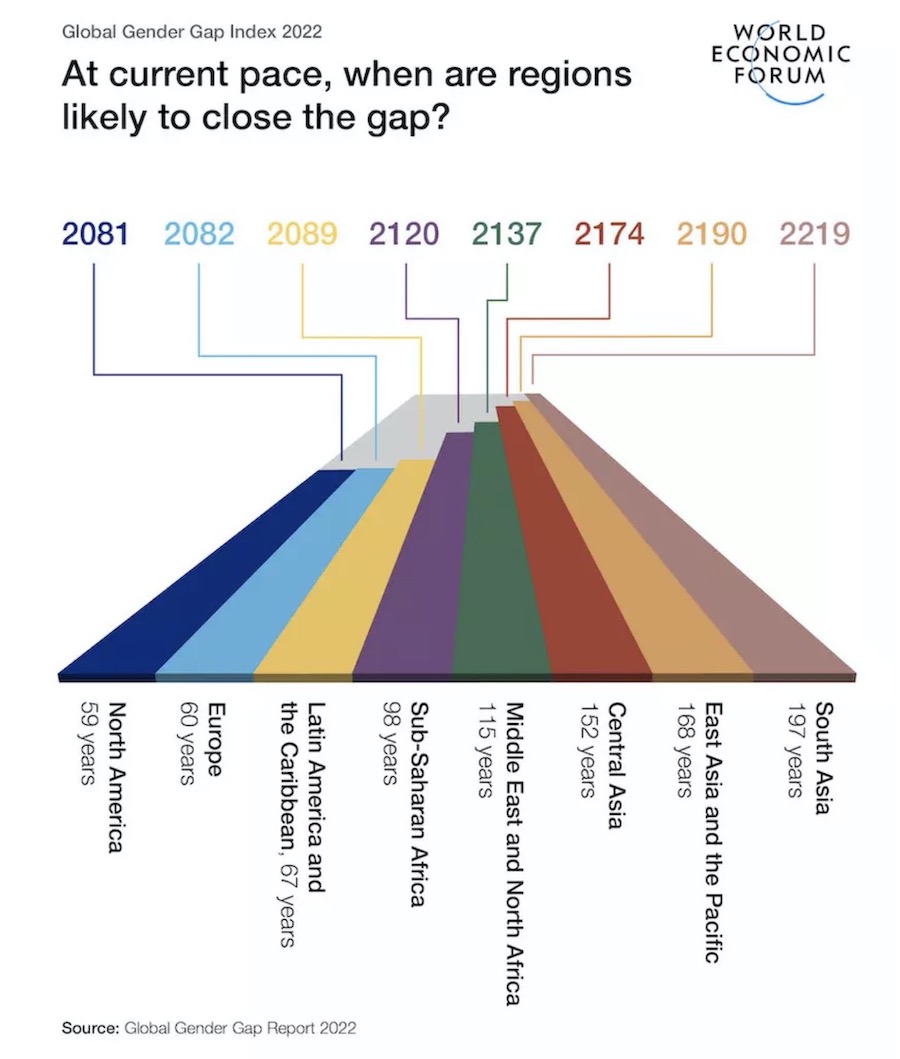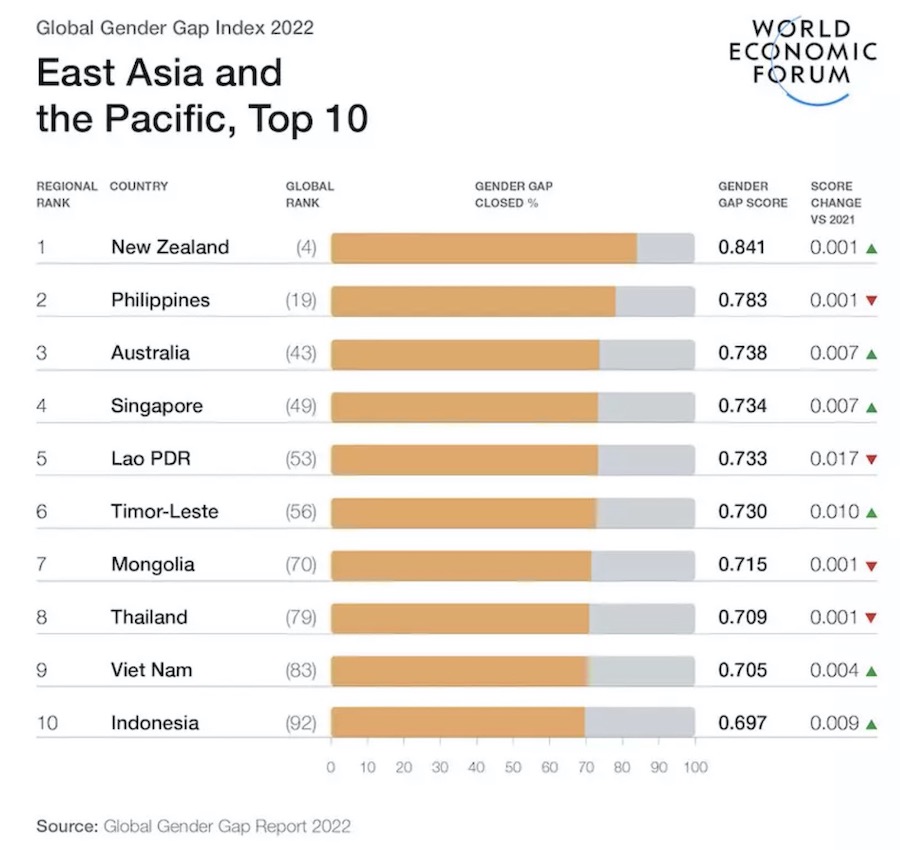Filipinas are doing well in closing gender gap – report
Women in Iceland live in the world’s most gender-equal country. Filipinas, too, are doing well, thank you.
The Philippines is second only to New Zealand and ahead of Australia as the top performers in closing the gender gap in East Asia and the Pacific, according to the World Economic Forum’s Global Gender Gap Report 2022.
The Global Gender Gap Report 2022 is live.
— World Economic Forum (@wef) July 13, 2022
Contained inside, the world's most gender-equal countries, where the gap still needs closing, and the actions being taken to do so.
Read it here: https://t.co/m9SwriYLsP#gendergap22 pic.twitter.com/lrAAHTs6U6
The report, now in its 16th year, was released on July 13 by the World Economic Forum, an independent international organization known for its annual meeting at the end of January in Davos, Switzerland; because of the pandemic and the war in Ukraine, it took place in May this year.
The World Economic Forum report benchmarks the evolution of gender-based gaps in four areas: economic participation and opportunity; educational attainment; health and survival; and political empowerment.

For the 13th consecutive year, Iceland is the place where women are most at par with the opposite sex. It is the only country to have closed more than 90 percent of the gender gap.
It is followed by Finland, Norway, New Zealand and Sweden.
Although no country has yet achieved full gender parity, the Top Ten economies have closed at least 80 percent of their gender gaps, with Iceland (90.8 percent) leading the global ranking.
Other Scandinavian countries such as Finland (86 percent, 2nd), Norway (84.5 percent, 3rd), and Sweden (82.2 percent, 5th) are in the Top Five countries with the best gender parity.
The countries registering the highest level of gender parity in Asia and the Pacific are New Zealand (84.1 percent), Philippines (78.3 percent) and Australia (73.8 percent).
Other European countries in the Top Ten are Ireland (80.4 percent, 9th) and Germany (80.1 percent, 10th).
Sub-Saharan African countries Rwanda (81.1 percent, 6th) and Namibia (80.7 percent , 8th), along with one Latin American country, Nicaragua (81 percent, 7th), and one country from East Asia and the Pacific, New Zealand (84.1 percent, 4th), are in the Top Ten.
The countries registering the highest level of gender parity in Asia and the Pacific are New Zealand (84.1 percent), Philippines (78.3 percent) and Australia (73.8 percent).

East Asia and the Pacific has closed 69 percent of its overall gender gap. “At this pace, the region will need 168 years to close the gender gap,” the report observes.
After North America, East Asia and the Pacific is the second-most advanced region on economic participation and opportunity, having closed 72.2 percent of the gender gap.
Zeroing in on Southeast Asia, the report says Laos (88.3 percent), Thailand (79.5 percent) and the Philippines (79.4 percent) rank the highest. South Korea (59.2 percent), Fiji (58.6 percent) and Japan (56.4 percent) rank the lowest.
East Asia and the Pacific has seen an increase in the share of women in senior positions (legislators, senior officials and managers). However, the labor-force participation rate of women decreased for all 19 countries between 2020 and 2021.

The Health and Survival subindex has a slightly lower level of parity across the region, at 95.2 percent. Myanmar, Mongolia and Philippines lead scores on this, while Singapore, Viet Nam and China have the most progress still to make.
Only five countries in the region have achieved gender parity in healthy life expectancy: Mongolia, Viet Nam, Thailand, Myanmar and the Philippines.
Relative to other regions, East Asia and the Pacific registered the second-lowest measure of progress on Political Empowerment, ahead only of Central Asia.
Only four countries have closed the gender gap on the share of women in parliamentary positions by at least one percentage point, in order of magnitude of improvement: Viet Nam, Timor-Leste, New Zealand and Indonesia. New Zealand, Singapore and Myanmar have increased their share of years with a female head of state.
The Global Gender Gap Report 2022 warns that as the global economy enters its third year of continued disruption, it will take another 132 years to close the gender gap.

“The cost of living crisis is impacting women disproportionately after the shock of labor market losses during the pandemic and the continued inadequacy of care infrastructure,” says Saadia Zahidi, Managing Director at the World Economic Forum.
“In face of a weak recovery, government and business must make two sets of efforts: targeted policies to support women’s return to the workforce and women’s talent development in the industries of the future,” she says.
“Otherwise, we risk eroding the gains of the last decades permanently and losing out on the future economic returns of diversity.”
The pandemic has widened the gender gap to 151 years.
— World Economic Forum (@wef) July 13, 2022
How do we close it?
The #gendergap22 report is here.
Read here: https://t.co/WI3JsAj6fM pic.twitter.com/roFfTrv6Vz


